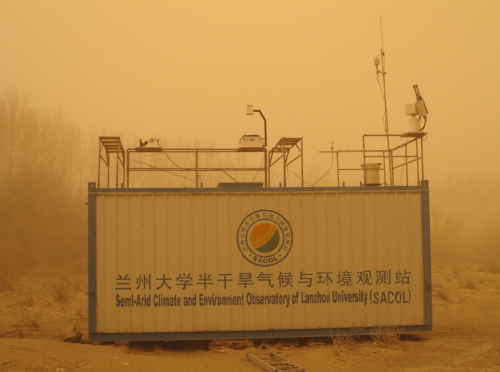
In a study published in Advances in Atmospheric Sciences, researchers have found that desertification has rapidly increased in China, particularly in semi-arid regions. This article was included in a special issue on the National Report (2011-2018) to the International Union on Geophysics and Geodes Centennial by the China National Committee for International Association of Meteorology and Atmospheric Sciences.

Semi-Arid climate and environment observatory of Lanzhou University (Image by BI Jianrong)
Drylands cover approximately 50 percent of the land surface in China, among which semi-arid regions are the main dryland type. However, these semi-arid regions have undergone continuous expansion and a significant drying trend in recent decades, which increases the risk of land degradation and deterioration in China. Fully understanding the characteristics and dynamics of semi-arid climate change in China is essential for delaying desertification, protecting renewable regional resources and developing reasonable policies, according to study first author, Professor Huang Jianping of Lanzhou University, China.
In their paper, Huang and his co-authors systematically review the characteristics of semi-arid climate change in China and highlight the dynamic processes affecting semi-arid climate change. The projection of semi-arid climate change and many issues that need to be further investigated are also summarized and discussed.
They found that semi-arid regions which dominate the coverage of drylands in northern China have experienced the largest warming and significant expansion over the last 60 years. The climate in expanded semi-arid regions has become drier and warmer, particularly in the newly formed semi-arid areas, and the drying trend is strongly associated with the weakened East Asian summer monsoon.
China’s semi-arid regions were found to have increased 33 percent during 1994–2008 compared to 1948–1962. In fact, the researchers found that semi-arid areas were expanding nearly ten times faster than those in arid and sub-humid areas.
"In the 21st century, semi-arid regions in China are projected to continuously expand. It will increase the challenges in dealing with desertification, food security and water supply," said Huang.
The article can be found at:
Advances in Atmospheric Sciences is hosted by the Institute of Atmospheric Physics of the Chinese Academy of Sciences.

86-10-68597521 (day)
86-10-68597289 (night)

86-10-68511095 (day)
86-10-68512458 (night)

cas_en@cas.cn

52 Sanlihe Rd., Xicheng District,
Beijing, China (100864)

